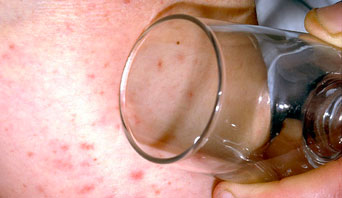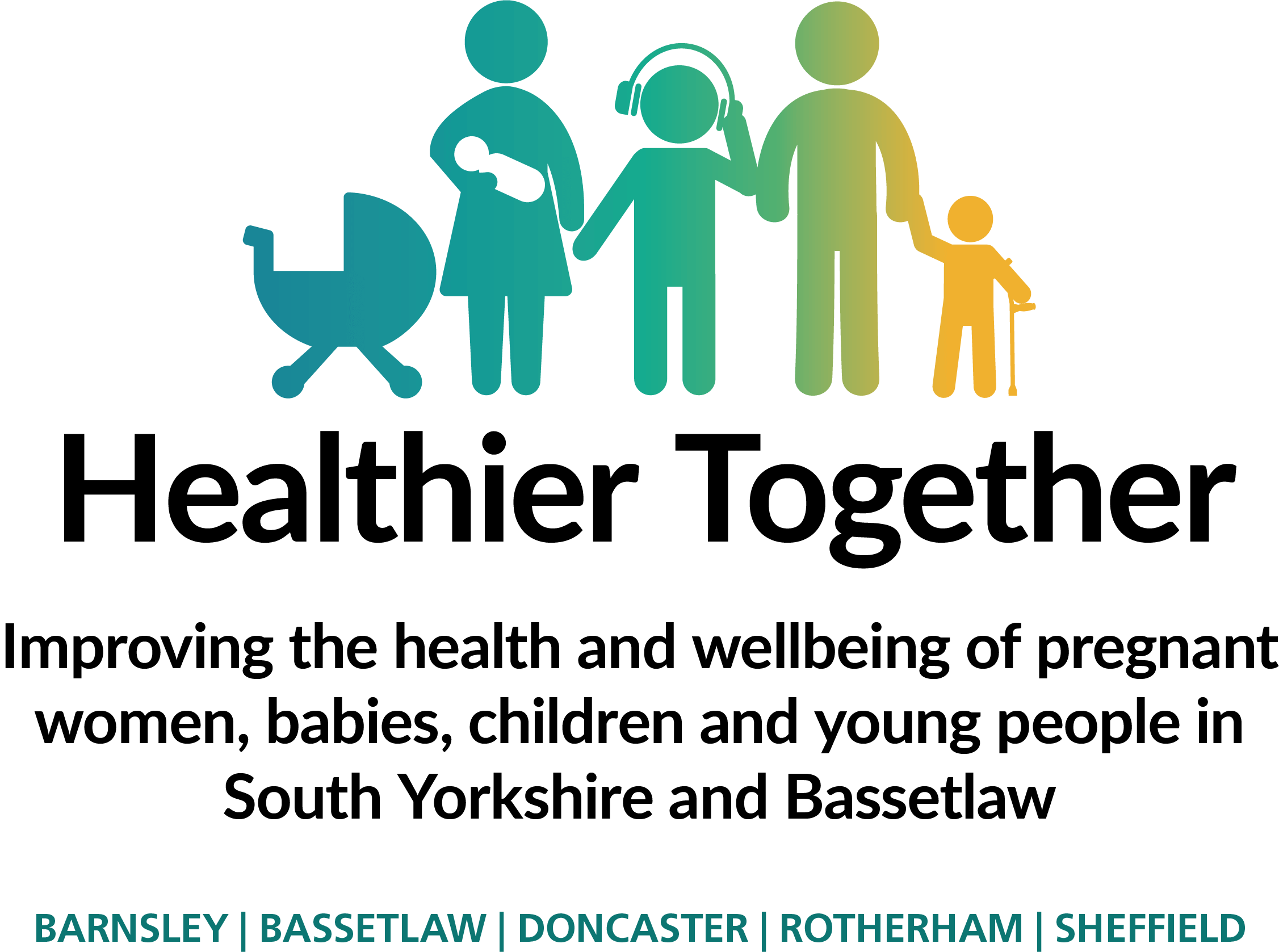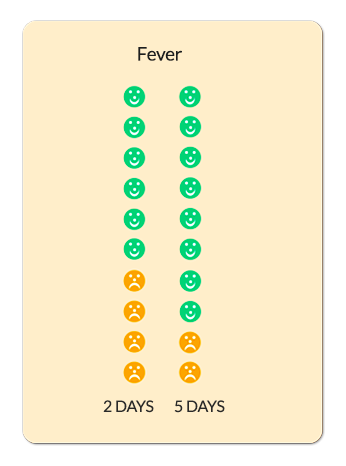Fever / High Temperature
Fever is very common in children and can happen when your child has an infection. Most children get better quickly with no treatment.
Please see red/amber/green tables in the when to worry section for advice on when and where to seek care for your child.
-
Viral infections are far more common than bacterial infections.
-
Symptoms such as runny nose, cough, wheeze, sore throat, red eyes and diarrhoea are more likely with a viral infection. If several people are unwell in the same home, this also suggests a viral infection (because viral infections are easily spread).
-
Most viral infections get better on their own and do not need antibiotics. Antibiotics can cause side effects such as rash and diarrhoea and can increase the risk of them developing antibiotic resistance.
-
How your child is compared to their usual self is more important than what the temperature is.
-
Fever is common in babies up to 48 hours after immunisations - it is OK to give paracetamol after the MenB vaccine if your baby is otherwise well.
-
Occasionally, children with fever can have a seizure/fit. This is called a febrile convulsion and most often happens in children aged between 6 months and 3 years.
How to take a temperature
You should use a digital thermometer, which you can buy in supermarkets and pharmacies.
This should be under the armpit for children 5 years and younger, and in the mouth for children over 5 years of age.
You could also use an in the ear thermometer for children over six months of age.
Operation Ouch - Fever
Video Carousel
Now showing: Video 1 of 6
When should you worry?
If your child has any of the following:
- Is under 3 months old with a temperature more than 38°C or under 36° (unless fever in the 48 hours following vaccindations and no other red features)
- Breathing very fast, too breathless to talk, eat or drink
- Working hard to breathe, drawing in of the muscles below the ribs, or noisy breathing (grunting)
- Breathing that stops or pauses
- Is pale, blue, mottled or feels unusually cold to touch
- Difficult to wake up, very sleepy or confused
- Weak, high-pitched cry or can't be settled
- Has a fit (seizure)
- Has a rash that does not go away with pressure (the 'Glass Test')
You need urgent help
Go to the nearest Hospital Emergency (A&E) Department or phone 999
If your child has any of the following:
- Is 3-6 months old with temperature 39°C or above (unless fever in the 48 hours following vaccinations and no other red or amber features)
- Temperature less than 36°C in those over 3 months
- Breathing a bit faster than normal or working a bit harder to breathe
- Dry skin, lips or tongue
- Not had a wee or wet nappy in last 8 hours
- Poor feeding in babies (;ess than half of their usual amount)
- Irritable (unable to settle them with toys, TV, food or hugs even after their fever has come down)
- Swelling of a limb or joint
- Not using or putting weight on an arm, leg, hand or foot.
- Complaining of severe pain that is not improving with painkillers
- Has had chickenpox in the past few days and is now getting worse with a high fever or a spreading red rash.
- Getting worse and i am still worried
You need to contact a doctor or nurse today
Please ring your GP surgery or call NHS 111 - dial 111
If symptoms persist for 4 hours or more and you have not been able to speak to either a member of staff from your GP practice or to NHS 111 staff, reck that your child has not developed any red features
If none of the above features are present
- Watch them closely for any change and look out for red or amber symptoms
- If your child has any other symptoms associated with their fever, you may want to look at the information on sore throat, cough and cold, earache, diarrhoea and vomiting or tummy ache.
- Additional advice is also available to young families for coping with crying of well babies - click here.
- If your child has a long term condition or disability and you are worried please contact your regular team for follow any plans that they have given you.
Self care
Continue providing your child’s care at home. If you are still concerned about your child, call NHS 111 – dial 111
What should you do?
Keep checking your child for red and amber signs and seek help if they are there.
- Fever is a normal response that helps your child's body to fight an infections.
- if your child seems unsettled or uncomfortable, you may wish to give your child paracaetamol or ibuprofen.
- if you have given your child one of these medicines and they are still uncomfortable 2 hours later you could try the other medicine.
- There are different types of paracetamol for children of different ages including 2 different strengths of syrup - infant and six plus. Always read the dose instructions carefully. You must wait at least 4 hours between doses. Do not give more than 4 doses in 24 hours.
- Ibuprofen is available in syrup and tablet form. Ibuprofen is not suitable for some children. if you are unsure whether your child can take ibuprofen, check with your pharmacist or doctor. Always read the dose instructions carefully. Don't give ibuprofen if your child has not had a wee in the last 12 hours. You must wait at least 6 hours between doses. Do not give more than 3 doses in 24 hours.
- It can be normal for the temperature to go back up when the medicine wears off.
- Avoid tepid sponging your child. It doesnt actually reduce your child's temperature and may cause your child to shiver.
- Encourage them to drink plenty of fluids.
- If a rash appears, do the glass test.

How long will your child’s symptoms last?
- Fever caused by a viral infection tends to improve within 2 to 3 days
- If your child’s fever lasts for more than 5 days, get them assessed by your GP
- The chart below shows how long fever lasts in a child with viral infections. The faces represent 10 children who have seen their GP with a viral infection. Green faces are those children whose fever has recovered within that time period.
The diagrams above are taken from www.whenshouldiworry.com
Where should you seek help?
- If it is non-urgent, speak to your local pharmacist or health visitor.
- If your child has any of the above features, urgently see your GP. For an urgent out-of-hours GP appointment, call NHS 111.
- You should only call 999 or go your nearest A&E department in critical or life threatening situations.
Health visitors are nurses or midwives who are passionate about promoting healthy lifestyles and preventing illness through the delivery of the Healthy Child Programme. They work with you through your pregnancy up until your child is ready to start school.
Health Visitors can also make referrals for you to other health professionals for example hearing or vision concerns or to the Community Paediatricians.
Contact them by phoning your Health Visitor Team or local Children’s Centre.
Sound advice
Health visitors also provide advice, support and guidance in caring for your child, including:
- Breastfeeding, weaning and healthy eating
- Exercise, hygiene and safety
- Your child’s growth and development
- Emotional health and wellbeing, including postnatal depression
- Safety in the home
- Stopping smoking
- Contraception and sexual health
- Sleep and behaviour management (including temper tantrums!)
- Toilet training
- Minor illnesses
For more information watch the video: What does a health visitor do?
Health visitors are nurses or midwives who are passionate about promoting healthy lifestyles and preventing illness through the delivery of the Healthy Child Programme. They work with you through your pregnancy up until your child is ready to start school.
Health Visitors can also make referrals for you to other health professionals for example hearing or vision concerns or to the Community Paediatricians.
Contact them by phoning your Health Visitor Team or local Children’s Centre.
Sound advice
Health visitors also provide advice, support and guidance in caring for your child, including:
- Breastfeeding, weaning and healthy eating
- Exercise, hygiene and safety
- Your child’s growth and development
- Emotional health and wellbeing, including postnatal depression
- Safety in the home
- Stopping smoking
- Contraception and sexual health
- Sleep and behaviour management (including temper tantrums!)
- Toilet training
- Minor illnesses
For more information watch the video: What does a health visitor do?
School nurses care for children and young people, aged 5-19, and their families, to ensure their health needs are supported within their school and community. They work closely with education staff and other agencies to support parents, carers and the children and young people, with physical and/or emotional health needs.
Primary and secondary schools have an allocated school nurse – telephone your child’s school to ask for the contact details of your named school nurse.
There is also a specialist nurse who works with families who choose to educate their children at home.
Sound Advice
Before your child starts school your health visitor will meet with the school nursing team to transfer their care to the school nursing service. The school nursing team consists of a school nursing lead, specialist public health practitioners and school health staff nurses.
They all have a role in preventing disease and promoting health and wellbeing, by:-
- encouraging healthier lifestyles
- offering immunisations
- giving information, advice and support to children, young people and their families
- supporting children with complex health needs
Each member of the team has links with many other professionals who also work with children including community paediatricians, child and adolescent mental health teams, health visitors and speech and language therapists. The school health nursing service also forms part of the multi-agency services for children, young people and families where there are child protection or safeguarding issues.
School nurses care for children and young people, aged 5-19, and their families, to ensure their health needs are supported within their school and community. They work closely with education staff and other agencies to support parents, carers and the children and young people, with physical and/or emotional health needs.
Primary and secondary schools have an allocated school nurse – telephone your child’s school to ask for the contact details of your named school nurse.
There is also a specialist nurse who works with families who choose to educate their children at home.
Sound Advice
Before your child starts school your health visitor will meet with the school nursing team to transfer their care to the school nursing service. The school nursing team consists of a school nursing lead, specialist public health practitioners and school health staff nurses.
They all have a role in preventing disease and promoting health and wellbeing, by:-
- encouraging healthier lifestyles
- offering immunisations
- giving information, advice and support to children, young people and their families
- supporting children with complex health needs
Each member of the team has links with many other professionals who also work with children including community paediatricians, child and adolescent mental health teams, health visitors and speech and language therapists. The school health nursing service also forms part of the multi-agency services for children, young people and families where there are child protection or safeguarding issues.
If you’re not sure which NHS service you need, call 111. An adviser will ask you questions to assess your symptoms and then give you the advice you need, or direct you straightaway to the best service for you in your area.
Sound advice
Use NHS 111 if you are unsure what to do next, have any questions about a condition or treatment or require information about local health services.
For information on common childhood illnesses go to What is wrong with my child?
If you’re not sure which NHS service you need, call 111. An adviser will ask you questions to assess your symptoms and then give you the advice you need, or direct you straightaway to the best service for you in your area.
Sound advice
Use NHS 111 if you are unsure what to do next, have any questions about a condition or treatment or require information about local health services.
For information on common childhood illnesses go to What is wrong with my child?
A&E departments provide vital care for life-threatening emergencies, such as loss of consciousness, suspected heart attacks, breathing difficulties, or severe bleeding that cannot be stopped. If you’re not sure it’s an emergency, call 111 for advice.
Sound advice
A&E departments provide vital care for life-threatening emergencies, such as loss of consciousness, suspected heart attacks, breathing difficulties, or severe bleeding that cannot be stopped. If you’re not sure it’s an emergency, call 111 for advice.





